来源:世界名人书画网 2022-05-24 09:05:09
Promoting exchanges and mutual learning among world civilizations -- a special report by Huang Wuhuai, a representative Chinese artist
文化兴则国家兴,文化强则民族强。当代中国,江山壮丽,人民豪迈,前程远大。时代为我国文艺繁荣发展提供了前所未有的广阔舞台。推动社会主义文艺繁荣发展、建设社会主义文化强国,广大文艺工作者义不容辞、重任在肩、大有作为。
If culture prospers, the country prospers, and if culture is strong, the nation is strong. Contemporary China has magnificent rivers and mountains, heroic people and great prospects. The era has provided an unprecedented broad stage for the prosperity and development of China's literature and art. To promote the prosperity and development of socialist literature and art and build a socialist cultural power, the majority of literary and art workers are duty bound, shoulder the important task and make great achievements.
广大文艺工作者要增强文化自觉、坚定文化自信,以强烈的历史主动精神,积极投身社会主义文化强国建设,坚持为人民服务、为社会主义服务方向,坚持百花齐放、百家争鸣方针,坚持创造性转化、创新性发展,聚焦举旗帜、聚民心、育新人、兴文化、展形象的使命任务,在培根铸魂上展现新担当,在守正创新上实现新作为,在明德修身上焕发新风貌,用自强不息、厚德载物的文化创造,展示中国文艺新气象,铸就中华文化新辉煌,为实现第二个百年奋斗目标、实现中华民族伟大复兴的中国梦提供强大的价值引导力、文化凝聚力、精神推动力。
The majority of literary and artistic workers should enhance their cultural consciousness, strengthen their cultural self-confidence, actively participate in the construction of a socialist cultural power with a strong historical initiative, adhere to the direction of serving the people and socialism, adhere to the policy of letting a hundred flowers bloom and a hundred schools of thought contend, adhere to creative transformation and innovative development, focus on holding the banner, gathering the hearts of the people, educating new people, rejuvenating culture The mission and task of image exhibition is to show new responsibilities in Bacon's soul casting, achieve new achievements in integrity and innovation, radiate a new style in Mingde self-cultivation, display the new atmosphere of Chinese literature and art with the cultural
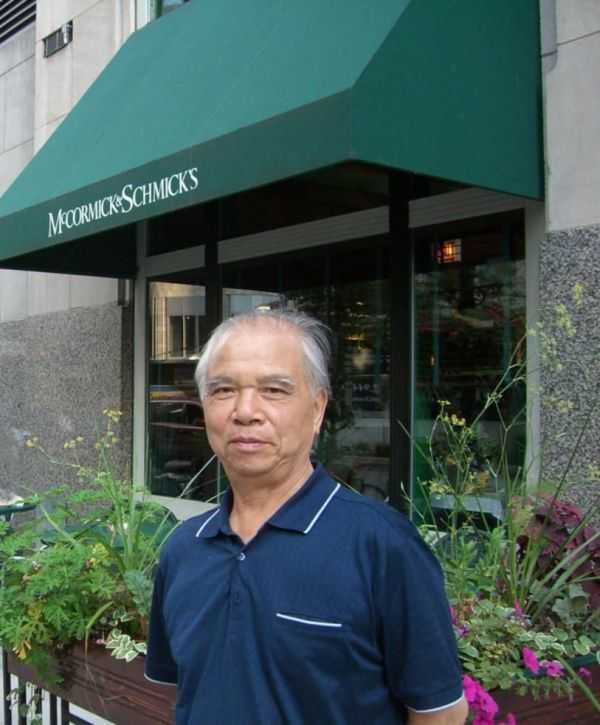
黄吴怀,1939年出生,原籍广西来宾市武宣县,现定居北京。1964年于北京传媒大学本科毕业,退休前任中央台资深记者,主任编辑。现为中国书法家协会会员、中国艺术学会常务委员会终身常务委员、中国书法艺术研究协会副主席、联合国美术家协会副主席、世界华人美术家协会副主席、东京中国书画院高级院士、中国书画名家研究会副会长、芝加哥美中文化艺术中心首届名誉顾问、中国民族文艺家协会艺术发展部终身副部长、世界华人艺术网艺术顾问、宋庄国际书画院终身名誉院长、新华人物网名誉主席。
2007年香港国际拍卖有限公司沈阳艺海拍卖代理中心授予“特级书画家”和“最具投资人物”、“中国当代实力派书画家”等荣誉称号。
2008年被国际中华人才专家协会、全民迎奥运艺术委员会办公室等8家单位及组织机构评为和授于“奥运人文风尚杰出艺术家”荣誉称号并获得“奥运人文艺术成就奖——艺术类金奖”;
2009年6月中国民族文艺家协会授予“共和国60年功勋文艺家”荣誉称号;
2009年12月被聘为国务院中国亚太经济合作中心国(宾)礼特供艺术家;在日本举办的中日友好文化艺术交流展中荣获“金奖”和“中日文化艺术交流突出贡献奖”及“杰出艺术家”称号;在印尼雅加达世界华人艺术精品大展中获“金奖”并被授于“突出贡献华人艺术家”荣誉称号;
2010年在美国举办的世界华人艺术精品大展中授予“中美文化艺术交流使者”、和“华人艺术功勋奖”荣誉称号;
2011年3月被中国国际现代艺术研究中心授予“当代书法艺术名家”、和“高级研究员”荣誉称号;
2012年度中国大都会美术基金会主办,博德瑞(北京)国际文化发展中心承办《名家书画大展赛》中荣获“中国最具影响力艺术大师”荣誉称号;被聘为中国大都会艺术博物馆馆长;
2013年1月被聘为中国诗书画联盟网名誉主席;
2013年1月被聘为英国皇家艺术研究院荣誉院士、客座教授;
2013年3月被聘请担任中国书画黄页网首席艺术家;
2013年5月被聘为新华艺术网艺术委员会副主席;
2013年6月被中国文学艺术研究会授予“全国书画作品最具收藏价值30名艺术家”荣誉称号;
2013年7月被聘为中国数字艺术馆馆长;
2013年9月被聘请担任宋庄艺术网艺术总监;
2013年11月被中国艺术人物网任命为学术委员会联席主席;
2013年12月被中国艺术名家研究院聘为副院长;
2014年4月被中国艺术人物网、中国艺术人物网学术委员会、中国兰亭工艺美术奖评委会授予“中国兰亭工艺美术终身成就奖”;
2014年5月被中国书画黄页网、新华人物网、中国艺术名家研究院评为“国际金马艺术奖”———终身艺术成就奖;
2015年8月被中国书画黄页网、新华人物网、中国民族文化研究院授予“中国文化艺术类终身成就奖—金羊奖”。
2016年4月被中国书画黄页网、毛泽东思想学术研究院授予“中国文化艺术节金猴奖终身成就奖”;
2016年6月被毛泽东思想学术研究院聘请担任名誉院长。
2016年8月被中国艺术家收藏协会聘为“名誉副会长”;
2016年8月被中国当代艺术出版社授予“2016年度中国艺术金笔奖”;
2017年5月被世界艺术学会聘为“荣誉主席兼艺术顾问一职,任期终身”并授予“2017世界最美艺术大师荣誉称号”。
2017年7月1日被中国国际诗书画印出版社授予“新时期最佳文艺创作奖.金奖”暨“最美艺术家”荣誉称号;
2017年9月25日被中国艺术百科聘为“终身艺术总监”;
2017年10月被香港特别行政区书画院聘为副院长;
2017年5月被世界艺术学会聘为荣誉主席兼艺术顾问一职任期终身,
2017年10月荣获中国国家书画网颁发的“中国艺术金钻奖”;
2017年11月被英国皇家艺术研究院聘为“首席艺术家兼高级顾问”(终身);
2017年11月被世界文艺家联合会授予“感动世界艺术人物”;
2017年11月被世界文艺家企业家交流中心授予“国际德艺双馨艺术家”荣誉称号,并荣获“国际文艺特别贡献奖”金奖;
2017年12月被中国国学学会聘为终身“名誉会长”;
2017年12月被中国黄页网聘请为艺术委员会主任一职,
2017年12月被中国书画黄页网、毛泽东思想学术研究院、香港特别行政区书画院、中国文化艺术节组委会,授予“十大国宝级艺术家”荣誉称号;
2018年5月被中国书画黄页网、毛泽东思想学术研究院、中国文化艺术节组委会授予中国文化艺术节终身成就奖《金犬奖》。
2019年7月被臻藏天下书画交易中心聘为名誉主席;
2019年7月被瑞典皇家艺术学院授予“世界瑰宝艺术家”荣誉称号;
2019年9月被中国收藏指南网聘为签约艺术家,
2019年9月被中国收藏指南网和中国收藏指南网艺术评估委员会评为中国当代最具收藏价值艺术家;
2019年9月被瑞典皇家艺术学院聘为终身外籍院士;
2019年9月被新丝路国际书画院聘为名誉院长。
2019年5月被北京童忆文化艺术馆授予“新中国十大先锋人物”;
2019年10月被国家艺术出版社授予“建国70载功勋艺术家”;
2019年10月被中国收藏家协会吸收为会员;
2019年10月被中国艺术家润格网、中华国礼出版社评为中华国礼艺术大师;
2019年11月被中国书画黄页网、中华国礼出版社授予“大匠之门六大艺坛宗匠”。
2019年12月艺术作品被“法国巴黎卢浮宫艺术展”展出并收藏。
2020年9月国际艺术投资收藏网授予“全球最具投资价值与收藏潜力艺术家”荣誉称号。
2020年9月获得国礼艺术网授予的“传世艺术家”荣誉称号。
2020年11月中国艺术品展销中心授予“大国工匠 光荣称号”。
2020年12月凤凰艺术网、中国影响力文化网授予“全国十大文化名人名家”“中国最具影响力艺术大家”;
2020年12月加拿大阿尔伯塔大学授予“世界艺术美学大师”,荣获“荣誉博士学位”;
2020年12月亚洲文化艺术网荣获“亚洲文化艺术奖”并授予“亚洲文艺勋章”;
2020年12月世界文化艺术网获得“世界最高艺术殿堂奖”,并被授予“世界杰出艺术家”和“为世界文化做有贡献的华人艺术家”称号。
2020年12月中国艺术家润格网艺术品鉴定评估认证工作委员会颁发“鉴定评估证书”;
2020年12月中国当代名家艺术网、中国民族产业协会、北京国韵阁文化交流中心授予“国家文艺金彩奖”;
2020年12月中国当代名家艺术网聘为“中国当代名家艺术网艺术总监”;
2021年1月国际艺术投资收藏网评定荣获“全球艺术投资巅峰奖”,授予“全球最具投资价值与收藏潜力艺术家”荣誉称号与“法国艺术及文学荣誉勋章”。
2021年1月22日中华卫视艺术风采栏目聘为“艺术总监”;
2021年3月国际艺术收藏网颁发“全球艺术投资巅峰奖、全球十大巅峰艺术家”荣誉称号;
2021年3月中央广播电视总台《智慧中国》栏目组授予“2020国际中国公益事业艺术形象传播大使”荣誉称号
2021年5月世界顶级艺术家研究会授予“2021年度华夏文明传承者”荣誉称号
2021年5月世界名人家网、中国文人诗词书画网、中国文化艺术大师网,获得“首届中国文人将”,并授予“当代中国文人典范”荣誉称号。
2021年5月建党百年全国首批历史文化传承人组委会、电视《文化强国》栏目组,特授予“建党百年全国首批书法传承人”荣誉称号。
2021年5月电视文化强国栏目组授予“建党百年全国首批书法传承人”荣誉称号。
2021年6月被国家一级书法师评审委员会授予:国家一级书法师“。
2021年法国皇家艺术学院授予“外籍名誉院长”
2021年6月被国家文化艺术网三家单位授予《国家文化艺术奖》
2021年聘为国礼文化官方网特邀顾问。
2021年6月台北故宫艺术院授予“故宫匠心艺术人物”称号,并荣获“故宫国际艺术奖”。
2021年被法国皇家艺术学院聘为“外籍名誉院长”。
2021年12月被国宝艺级术大师评审委员会和国礼文化艺术调研委员会授予“国宝级艺术大师”荣誉称号。
一生把书法看作生命的流衍,在书法艺苑中,耕耘不缀。在继承传统书艺的同时,刻意追求个性、艺术性、欣赏性和时代感,把多种书体融于自己的作品中,进入了草、行、楷皆精的境界。近十多年来创作的作品多次在国家级博物馆参加全国性书画展。被人民日报、北京晚报、北京青年报、北京电视台、《中国收藏》、《中国近代现代书画名家经典》、中国艺术鉴藏杂志社出版的“中国书法大家”三人集,人民网、中国书画家联谊会主办的中国书画拍卖网、雅昌网、中国书画出版社主办的翰墨艺术网等几十种报纸、书刊、网络、传媒登载和介绍,受到国内外书法爱好者、收藏家的喜爱和收藏。中央台领导出国访问,用作礼品赠送各国政要,得到以色列总统魏茨曼的赞赏。2007年6月,在美国芝加哥市成功举办了一个月的个人书法展览,部分作品被美国一些收藏家所收藏。2011年8月,在人民大会堂书画室当场书写的巨幅书法作品毛泽东的《沁园春•雪》被人民大会堂收藏。
Huang Wuhuai, born in 1939, originally from Wuxuan County, Laibin City, Guangxi, now lives in Beijing. He graduated from Beijing Communication University in 1964 and retired as a senior reporter and editor-in-chief of CCTV. Now he is a member of the Chinese Calligraphers Association, a lifelong standing member of the Standing Committee of the Chinese Art Society, the vice chairman of the Chinese Calligraphy Art Research Association, the vice chairman of the United Nations Artists Association, the vice chairman of the World Chinese Artists Association, a senior academician of the Tokyo Chinese Painting and Calligraphy Academy, and a famous Chinese calligraphy and painting artist. Vice President of the Research Association, the first honorary consultant of the Chicago US-China Cultural and Art Center, the lifelong deputy director of the Art Development Department of the Chinese National Writers Association, the art consultant of the World Chinese Art Network, the lifelong honorary president of the Songzhuang International Painting and Calligraphy Institute, and the honorary chairman of the Xinhua People Network .
In 2007, Hong Kong International Auction Co., Ltd. Shenyang Yihai Auction Agency Center awarded honorary titles such as "Superior Calligrapher and Painter", "Most Investor" and "Chinese Contemporary Powerful Calligrapher and Painter".
In 2008, he was awarded and awarded the honorary title of "Outstanding Artist of Olympic Humanistic Style" by 8 units and organizations including the International Chinese Talent Experts Association and the Office of the National Olympic Art Committee and won the "Olympic Humanities and Art Achievement Award - Art Gold Award" ;
In June 2009, the Chinese National Writers and Artists Association awarded the honorary title of "60 Years of Meritorious Writers and Artists of the Republic";
In December 2009, he was hired as a special artist for the State (guest) ceremony of the China Asia-Pacific Economic Cooperation Center of the State Council; in the Sino-Japanese Friendship Cultural and Art Exchange Exhibition held in Japan, he won the "Gold Award" and "China-Japan Cultural and Art Exchange Outstanding Contribution Award" and The title of "Outstanding Artist"; won the "Gold Award" in the World Chinese Art Exhibition in Jakarta, Indonesia, and was awarded the honorary title of "Outstanding Contribution Chinese Artist";
In 2010, he was awarded the honorary titles of "Sino-American Cultural and Art Exchange Messenger" and "Chinese Art Merit Award" in the World Chinese Art Exhibition held in the United States;
In March 2011, he was awarded the honorary titles of "Famous Contemporary Calligraphy Artist" and "Senior Researcher" by China International Modern Art Research Center;
In 2012, he won the honorary title of "China's Most Influential Art Master" in the "Famous Calligraphy and Painting Exhibition Competition" hosted by the China Metropolitan Art Foundation and hosted by Bodry (Beijing) International Cultural Development Center; hired by the Metropolitan Museum of Art in China curator;
In January 2013, he was appointed as the honorary chairman of China Poetry, Calligraphy and Painting Alliance Network;
In January 2013, he was appointed as an honorary academician and visiting professor of the Royal Academy of Arts;
In March 2013, he was hired as the chief artist of the Yellow Pages of Chinese Painting and Calligraphy;
In May 2013, he was appointed as the vice chairman of the Art Committee of Xinhua Art Network;
In June 2013, he was awarded the honorary title of "The 30 Most Collectible Artists of Painting and Calligraphy Works in China" by the Chinese Literature and Art Research Association;
In July 2013, he was hired as the curator of China Digital Art Museum;
In September 2013, he was hired as the art director of Songzhuang Art Network;
In November 2013, he was appointed as the co-chairman of the academic committee by China Art People Network;
In December 2013, he was appointed as the vice president of the Chinese Academy of Famous Artists;
In April 2014, he was awarded the "China Lanting Arts and Crafts Lifetime Achievement Award" by the China Art Figures Network, the China Art Figures Network Academic Committee, and the China Lanting Arts and Crafts Award Jury;
In May 2014, he was awarded the "International Golden Horse Art Award" -- Lifetime Artistic Achievement Award by Chinese Painting and Calligraphy Yellow Pages, Xinhua People Network, and China Academy of Famous Artists;
In August 2015, he was awarded the "Chinese Culture and Art Lifetime Achievement Award - Golden Sheep Award" by the Chinese Painting and Calligraphy Yellow Pages, Xinhua People Network, and the Chinese Academy of National Culture.
In April 2016, he was awarded the "Lifetime Achievement Award of the Golden Monkey Award of the Chinese Culture and Art Festival" by the Chinese Painting and Calligraphy Yellow Pages and the Mao Zedong Thought Academic Research Institute;
In June 2016, he was hired as honorary dean by the Mao Zedong Thought Academic Research Institute.
In August 2016, he was hired as "Honorary Vice President" by the Chinese Artists Collection Association;
In August 2016, he was awarded the "2016 Chinese Art Golden Pen Award" by China Contemporary Art Publishing House;
In May 2017, he was hired by the World Art Association as the "Honorary Chairman and Art Advisor for a lifetime" and awarded the "2017 World's Most Beautiful Artist Honorary Title".
On July 1, 2017, he was awarded the "Best Literature and Art Creation Award in the New Era. Gold Award" and the honorary title of "The Most Beautiful Artist" by China International Poetry, Calligraphy, Painting and Printing Press;
On September 25, 2017, he was hired as "Lifetime Art Director" by China Art Encyclopedia;
In October 2017, he was appointed as the vice president of the Hong Kong Special Administrative Region Painting and Calligraphy Academy;
In May 2017, he was hired by the World Art Society as the honorary chairman and art consultant for a lifetime.
In October 2017, he won the "Golden Diamond Award for Chinese Art" issued by China National Painting and Calligraphy Network;
In November 2017, he was hired by the Royal Academy of Arts as "Chief Artist and Senior Advisor" (lifetime);
In November 2017, he was awarded the "Moving World Artistic Figure" by the World Federation of Writers and Artists;
In November 2017, he was awarded the honorary title of "International Artists of Morality and Art" by the World Literature, Artists and Entrepreneurs Exchange Center, and won the Gold Award of "International Literature and Art Special Contribution Award";
In December 2017, he was hired as the life-long "Honorary President" by the Chinese Sinology Society;
In December 2017, he was hired by China Yellow Pages as the director of the Art Committee.
In December 2017, he was awarded the honorary title of "Top Ten National Treasure Artists" by the Chinese Painting and Calligraphy Yellow Pages, the Mao Zedong Thought Academic Research Institute, the Hong Kong Special Administrative Region Painting and Calligraphy Institute, and the Organizing Committee of the Chinese Culture and Art Festival;
In May 2018, he was awarded the Lifetime Achievement Award "Golden Dog Award" by the Chinese Culture and Art Festival, the Chinese Painting and Calligraphy Yellow Pages, the Mao Zedong Thought Academic Institute, and the Organizing Committee of the Chinese Culture and Art Festival.
In July 2019, he was appointed as the honorary chairman of Zhenzang World Calligraphy and Painting Exchange Center;
In July 2019, he was awarded the honorary title of "World Treasure Artist" by the Royal Swedish Academy of Arts;
In September 2019, he was hired as a contract artist by China Collection Guide Network.
In September 2019, he was rated as the most collectible artist in contemporary China by China Collection Guide Network and China Collection Guide Network Art Evaluation Committee;
In September 2019, he was hired as a lifelong foreign academician by the Royal Swedish Academy of Arts;
In September 2019, he was appointed as the honorary president of the New Silk Road International Painting and Calligraphy Academy.
In May 2019, he was awarded the "Top Ten Pioneers of New China" by Beijing Tongyi Culture and Art Museum;
In October 2019, he was awarded the "Meritorious Artist of the 70th Anniversary of the Founding of the People's Republic of China" by the National Art Publishing House;
In October 2019, he was absorbed as a member by the China Collectors Association;
In October 2019, he was awarded the title of Master of Chinese National Rites Art by Chinese artist Runge.com and China National Rites Publishing House;
In November 2019, he was awarded the "Six Master Craftsmen of the Great Craftsman's Gate" by the Yellow Pages of Chinese Painting and Calligraphy and the China National Rites Publishing House.
In December 2019, the art works were exhibited and collected at the "Art Exhibition of the Louvre in Paris, France".
In September 2020, the International Art Investment Collection Network awarded the honorary title of "Artist with the Most Investment Value and Collection Potential in the World".
In September 2020, he was awarded the honorary title of "Handed Down Artist" by Guoli Art Network.
In November 2020, the China Artwork Exhibition and Sales Center awarded the "Glorious Title of Craftsman of a Great Power".
In December 2020, Phoenix Art Network and China Influential Culture Network awarded "Top Ten Cultural Celebrities in China" and "China's Most Influential Artists";
In December 2020, the University of Alberta in Canada awarded the "World Master of Art Aesthetics" and won the "Honorary Doctorate";
In December 2020, the Asian Culture and Art Network won the "Asian Culture and Art Award" and awarded the "Asian Art and Literature Medal";
In December 2020, the World Culture and Art Network won the "World's Highest Art Hall Award", and was awarded the titles of "World Outstanding Artist" and "Chinese Artists Contributing to World Culture".
In December 2020, the "Appraisal and Evaluation Certificate" was issued by the Chinese artist Runge.com Artwork Appraisal and Certification Working Committee;
In December 2020, China Contemporary Famous Artists Art Network, China National Industry Association, Beijing Guoyunge Cultural Exchange Center awarded the "National Literature and Art Golden Award";
In December 2020, China Contemporary Famous Artists Network was hired as "Art Director of China Contemporary Famous Artists Network";
In January 2021, the International Art Investment Collection Network won the "Global Art Investment Summit Award", awarded the honorary title of "The World's Most Investment Value and Collection Potential Artist" and the "French Art and Literature Medal of Honor".
On January 22, 2021, China Satellite TV's art style column was hired as "art director";
In March 2021, the International Art Collection Network will issue the honorary title of "Global Art Investment Pinnacle Award, the World's Top Ten Peak Artists";
In March 2021, the "Smart China" column group of China Central Radio and Television Station awarded the honorary title of "2020 International China Public Welfare Art Image Communication Ambassador"
In May 2021, the World's Top Artists Research Association awarded the honorary title of "2021 Inheritor of Chinese Civilization"
In May 2021, the World Celebrity Home Network, the Chinese Literati Poetry, Calligraphy and Painting Network, and the Chinese Culture and Art Master Network will be awarded the "First Chinese Literati General" and awarded the honorary title of "Contemporary Chinese Literati Model".
In May 2021, the Organizing Committee of the National First Batch of Historical and Cultural Inheritors and the TV "Cultural Power" column group will be specially awarded the honorary title of "The National First Batch of Calligraphy Inheritors in the Centennial of the Party's Founding".
In May 2021, the TV culture power column group awarded the honorary title of "the first batch of calligraphy inheritors in the country for the century after the founding of the party".
In June 2021, it was awarded by the National First-Class Calligrapher Review Committee: National First-Class Calligrapher".
In 2021, the Royal Academy of Arts of France awarded "Foreign Honorary President"
In June 2021, it was awarded the "National Culture and Art Award" by three units of the National Culture and Art Network
In 2021, he will be hired as a special consultant for the official website of the National Ceremony Culture.
In June 2021, the National Palace Museum of Art in Taipei was awarded the title of "Ingenuity and Artistic Figure of the Palace Museum" and won the "National Palace Museum International Art Award".
In 2021, he was appointed as the "Foreign Honorary Dean" by the Royal Academy of Arts in France.
In December 2021, he was awarded the honorary title of "National Treasure Master Artist" by the National Treasure Art Master Review Committee and the National Gift Culture and Art Research Committee.
Throughout his life, calligraphy is regarded as the flow of life, and in the calligraphy art garden, hard work is not punctuated. While inheriting traditional calligraphy, he deliberately pursues individuality, artistry, appreciation and a sense of the times, and integrates various calligraphic styles into his works, entering the realm of cursive, line and regular script. The works created in the past ten years have participated in national calligraphy and painting exhibitions in national museums for many times. The trio of "Masters of Chinese Calligraphy" published by People's Daily, Beijing Evening News, Beijing Youth Daily, Beijing TV, "China Collection", "Classics of Famous Chinese Modern and Modern Calligraphy and Painting", and China Art Collection Magazine, People's Daily Online, Chinese Calligraphy and Painting It has been published and introduced in dozens of newspapers, books, networks and media, such as the Chinese Painting and Calligraphy Auction Network hosted by the Family Association, the Artron Network, and the Hanmo Art Network hosted by the Chinese Painting and Calligraphy Publishing House, which are loved and collected by domestic and foreign calligraphy lovers and collectors. . The leaders of CCTV went abroad and used them as gifts for dignitaries from various countries, which were appreciated by Israeli President Weizmann. In June 2007, he successfully held a one-month personal calligraphy exhibition in Chicago, USA, and some of his works were collected by some American collectors. In August 2011, Mao Zedong's "Qinyuan Spring Snow", a huge calligraphy work written on the spot in the painting and calligraphy room of the Great Hall of the People, was collected by the Great Hall of the People
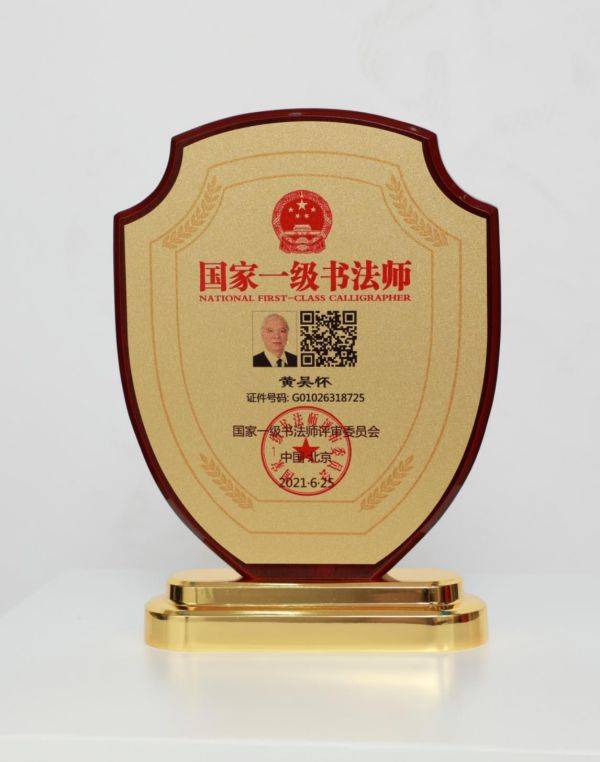
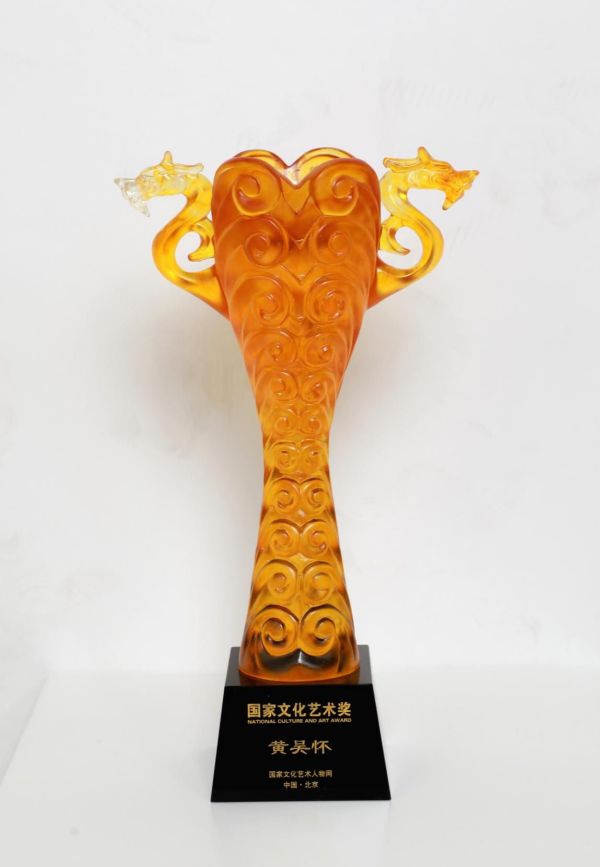
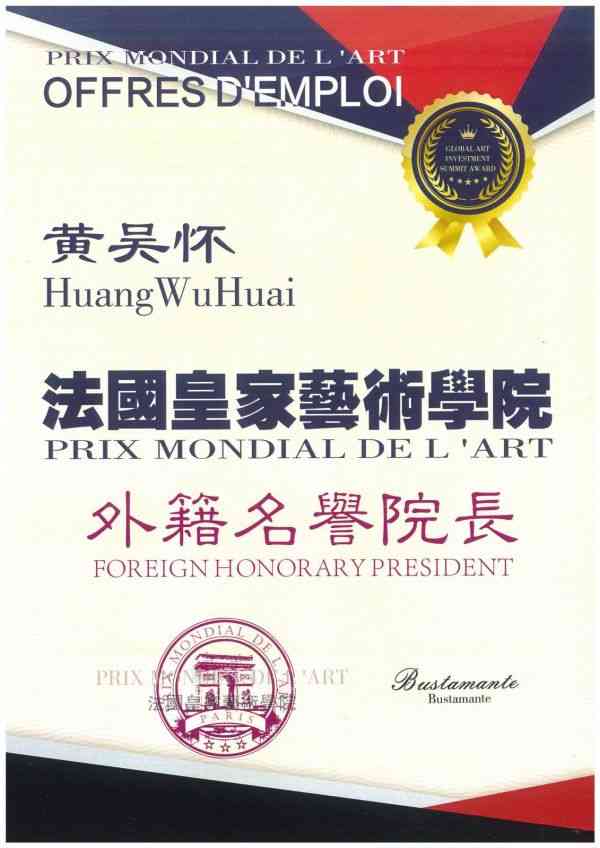
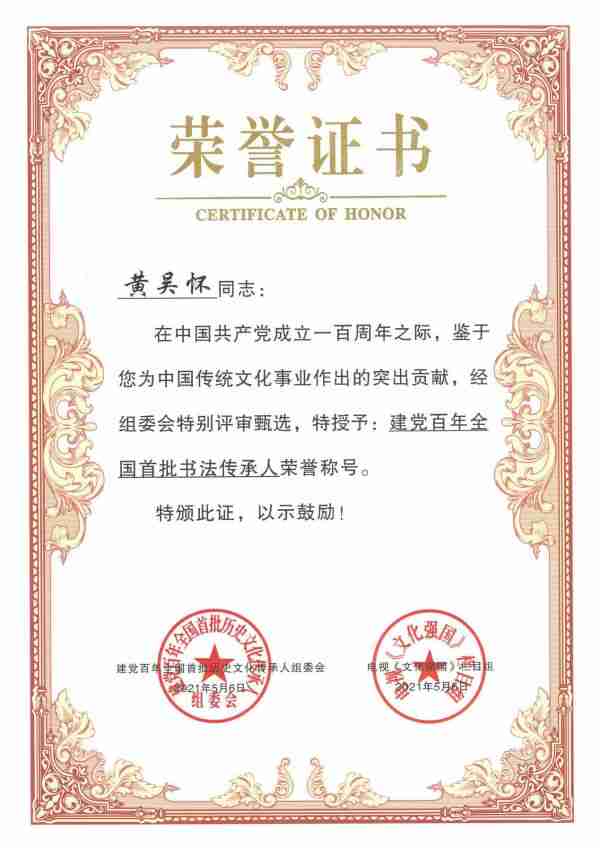
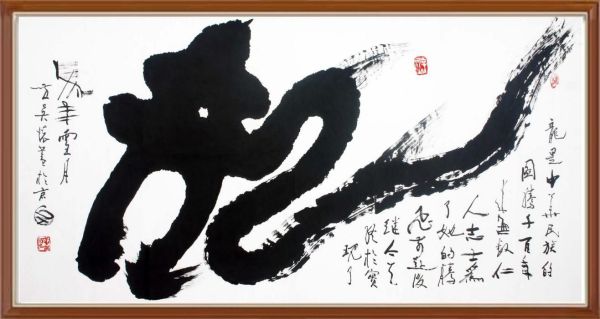
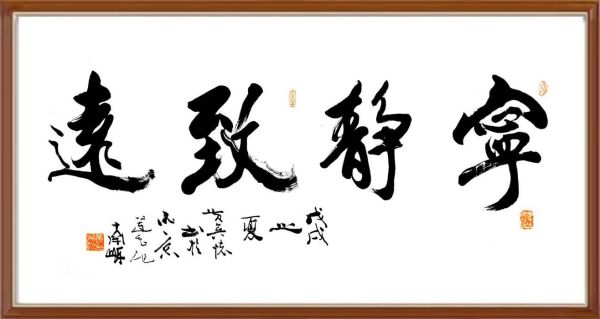
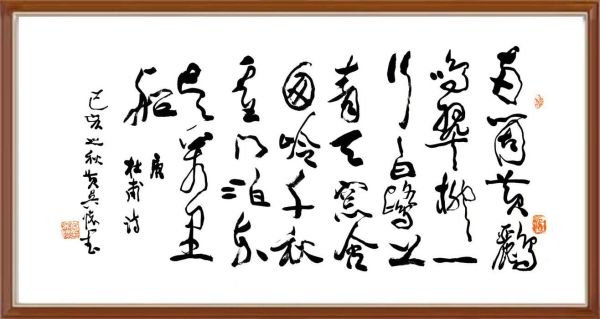
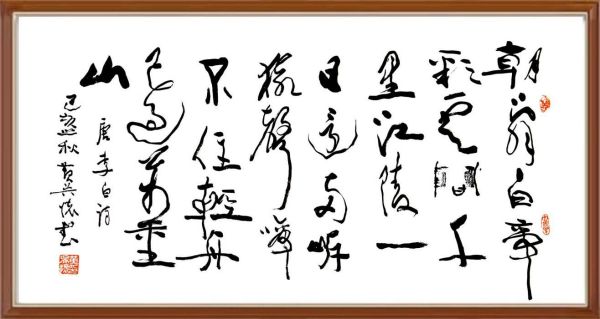
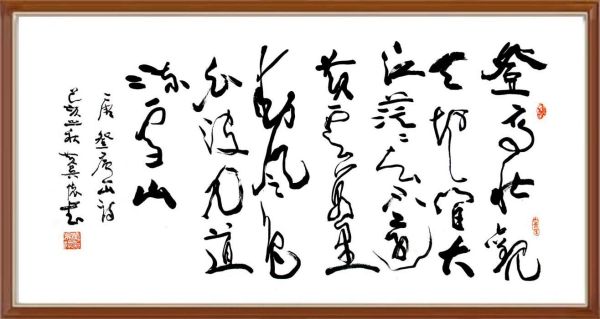
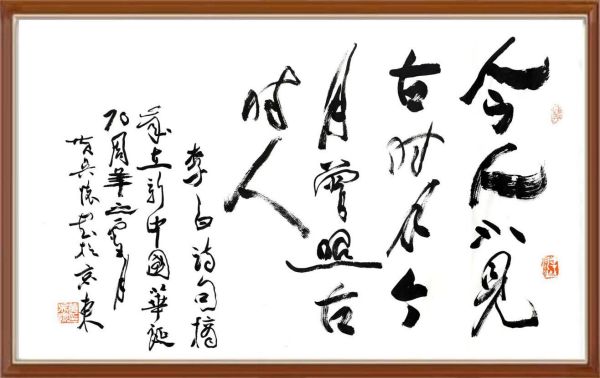
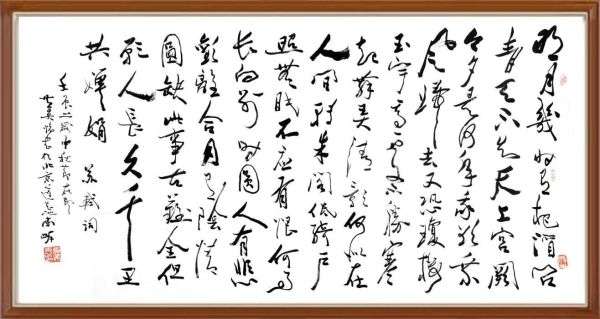
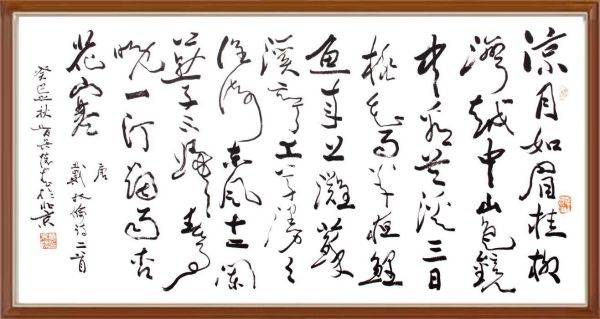
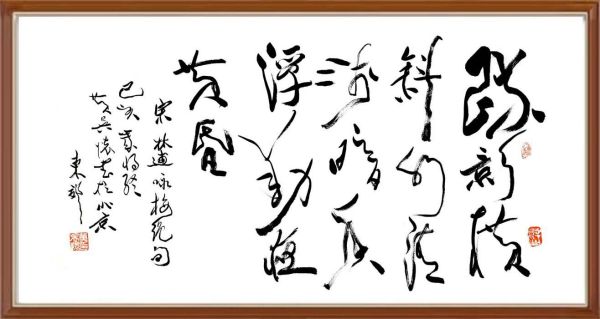
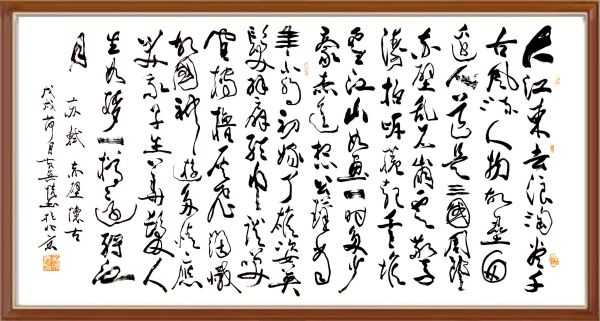

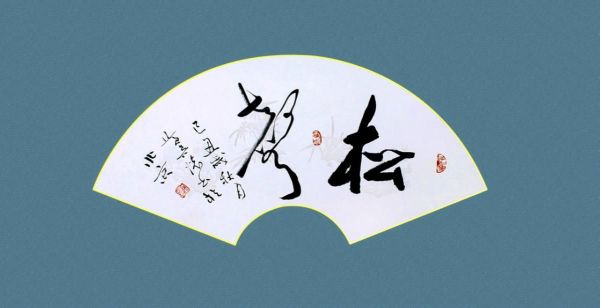
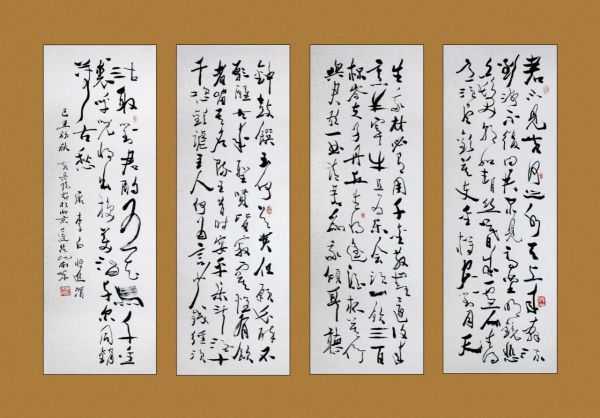
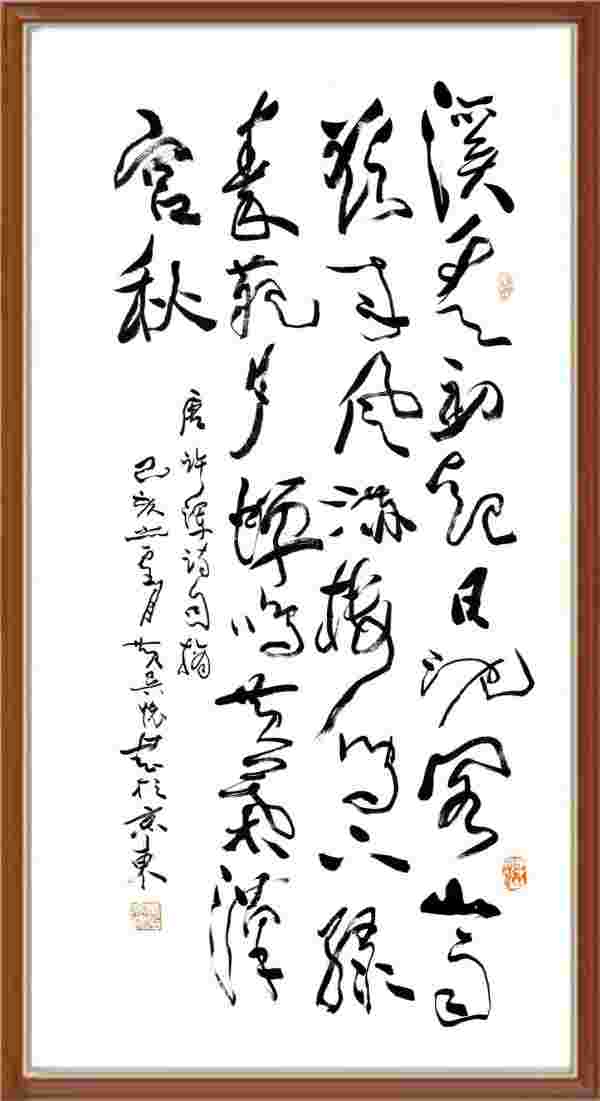
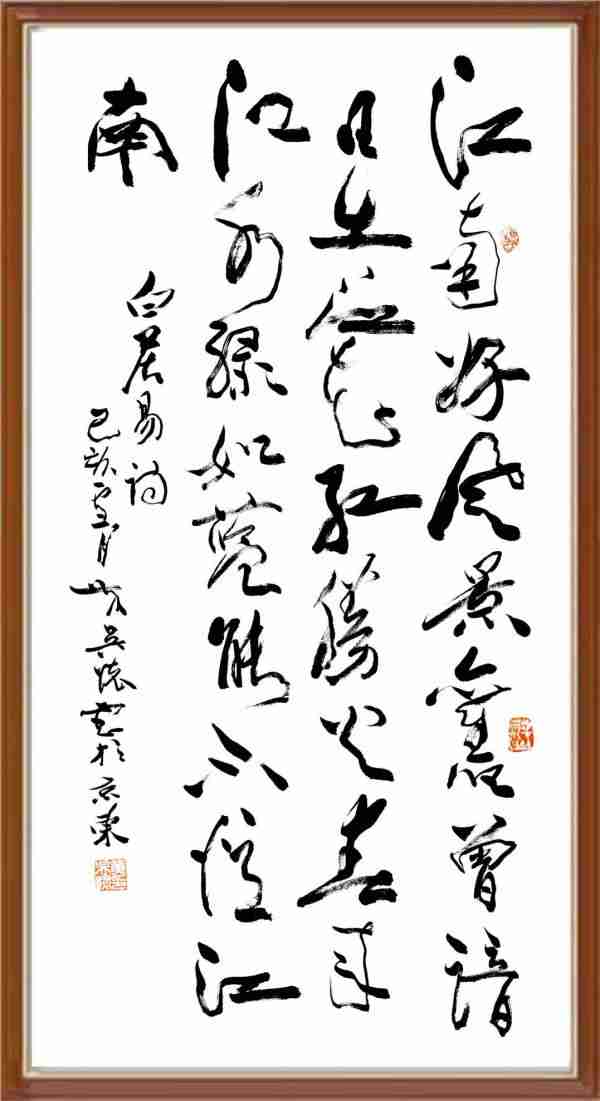
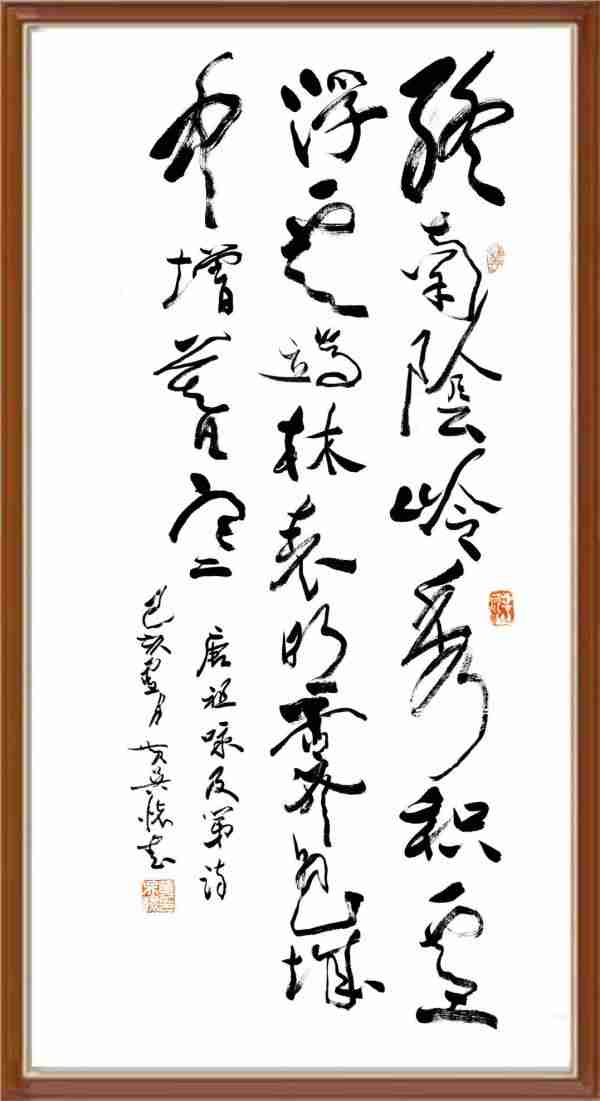
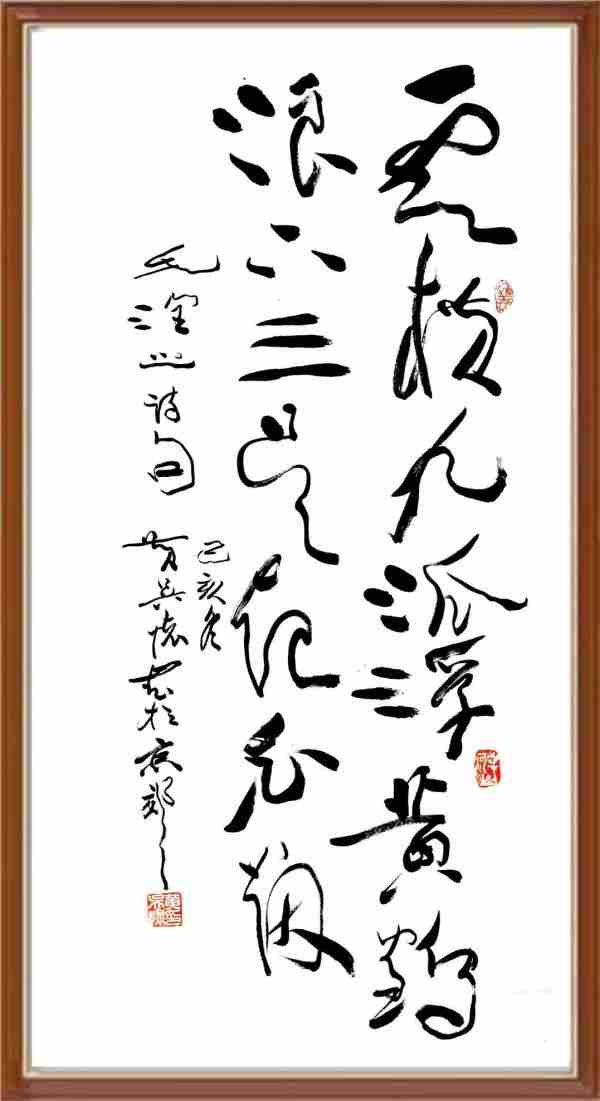
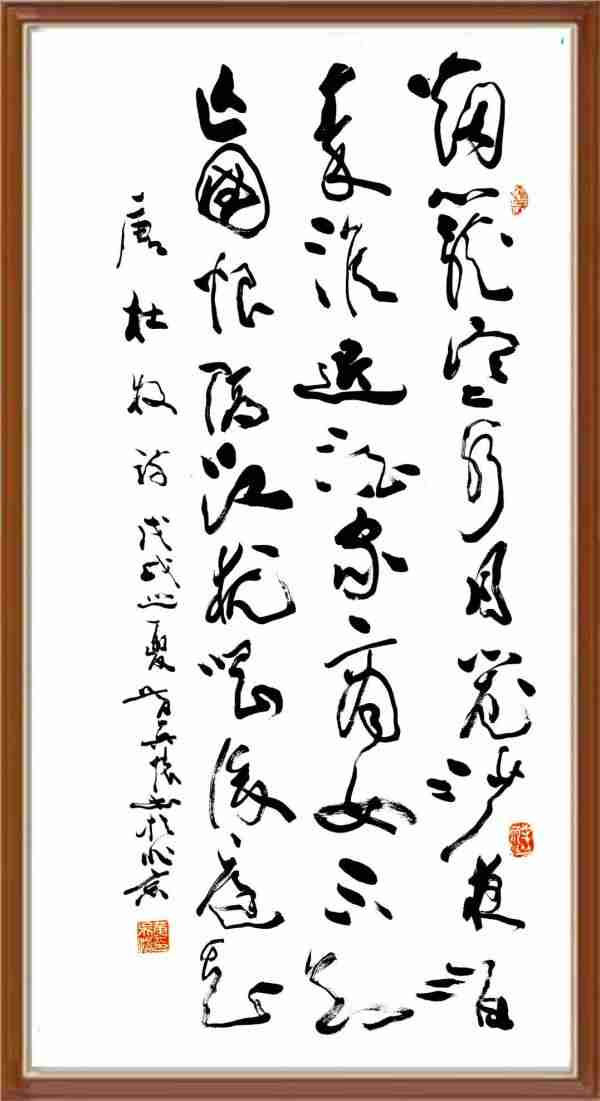
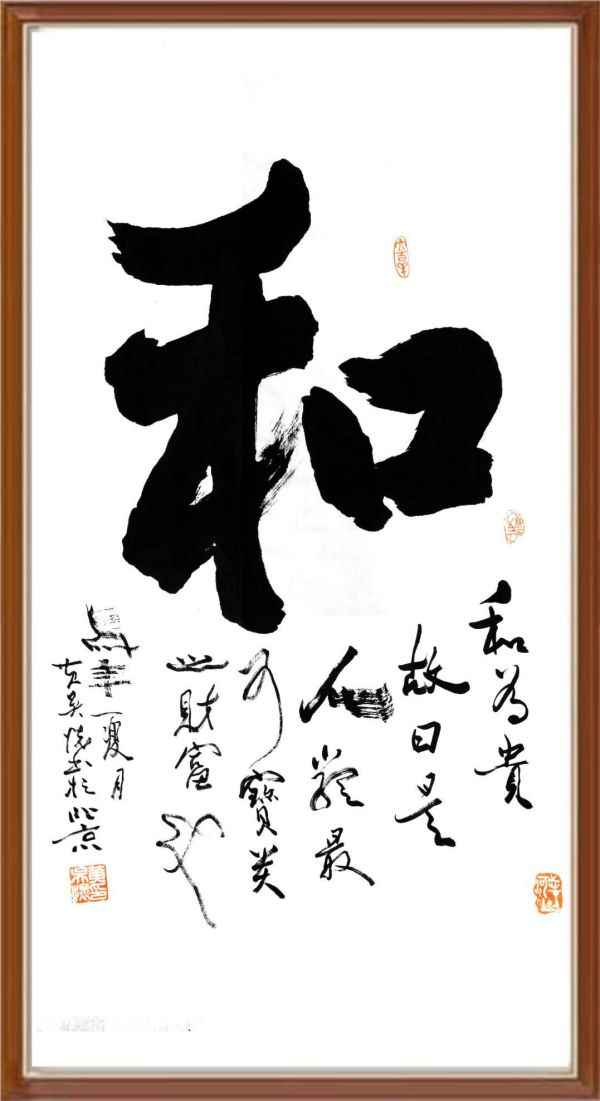
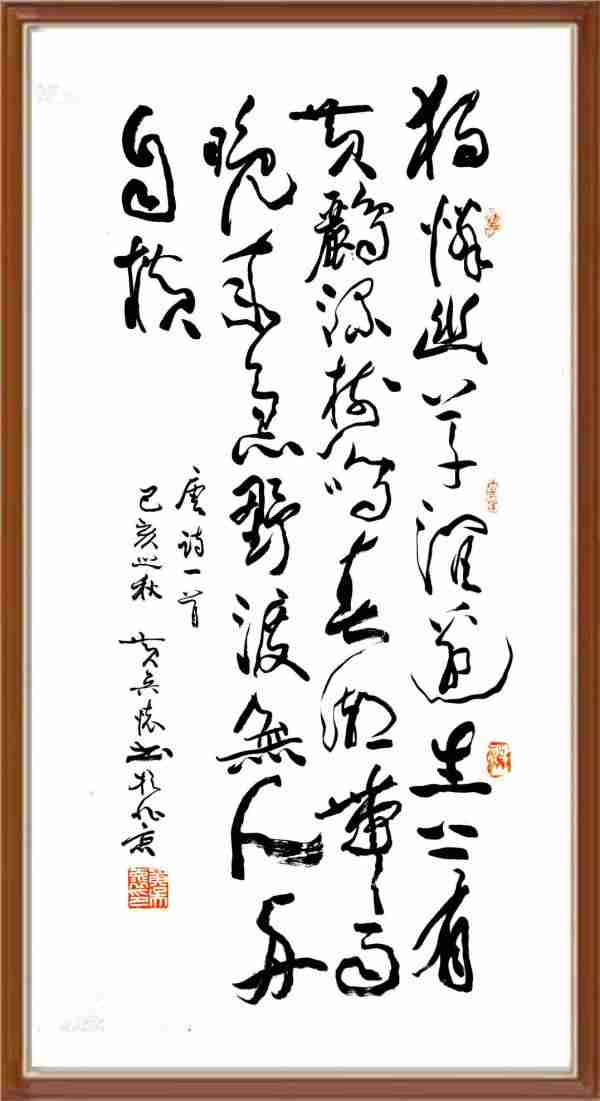
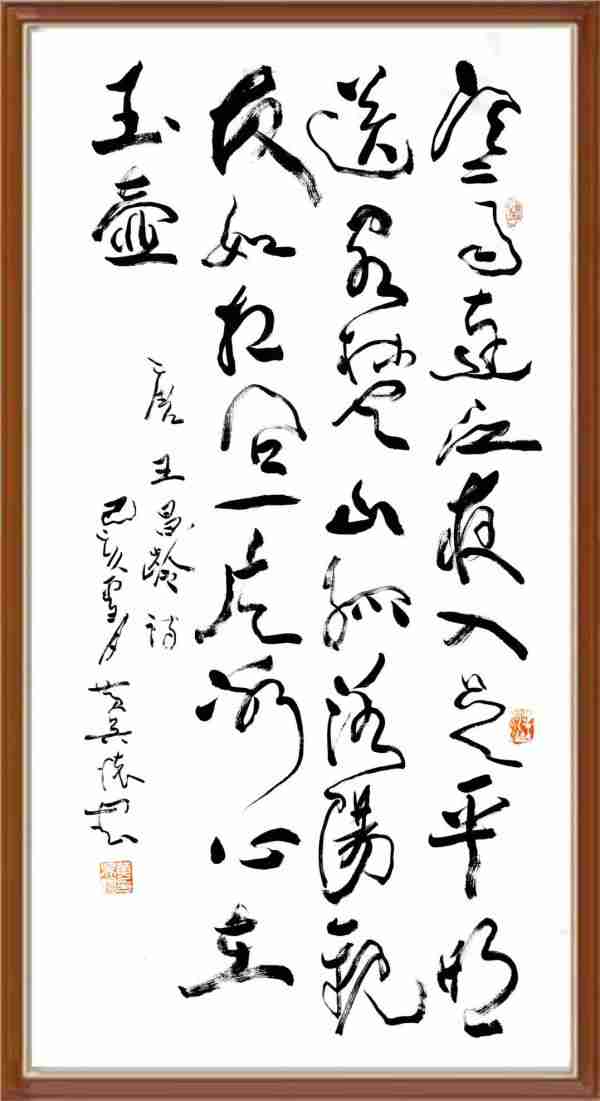
学 书 感 悟
我们的先人创造的方块字已经几千年了,而作为书法艺术也有一千多年。“书法”渗透了中国人的哲学思想和伦理道德,最能代表中国人的情感,是民族之魂,是东方的文化瑰宝。这是我在长期的书法实践中逐步认识理解的。书法,书法,首先是“书”然后是“法”。而这个“书”是从描红开始的。所谓“书”就是书写(写字),写字干什么?宽冕一点说是长本领,为人民服务,为祖国做贡献。难听一点说就是换饭吃。后半句对中国知识分子来说,总是腼腆,难于启齿,但却是实话。写字是读书人最起码的基本功,只要走读书这一条道,就一辈子离不开写字。
书读的越多,字也写得多,写得好。由此观之,书法离不开学问,著名美学家李泽厚说:“书法归根到底是三分技巧,七分学问”,可见学问之于书法是多么重要。而学问的积累是长期艰苦的过程,需要用毕生精力。要是学养单薄,书法就会缺乏深度、厚度,难上档次,这是许许多多书法爱好者半途而缀的重要原因。如果学养不深厚,他的作品就缺乏底气、神韵,赏之乏味。看日本书家的书法作品,由于缺乏中国人的文化底蕴,民族思想感情,赏之索然乏味,就是这个理。没有学问的书法是苍白的,没有说服力和感染力。骋目今日书坛的领军人物欧阳中石、沈鹏等老先生哪一个不是知识渊博,诗词超迈,著作等身,为书坛树立煜煜生辉的典范。中国的书法艺术强调书家的人格魅力,坚持人品第一,书品第二;正字先正人,讲究“天人合一”“人书合一”。颜真卿几代人为唐王朝舍身忘死,奋不顾身,因而他的书品就一身正气,令人肃然起敬,成了后人学习的楷模。如果是个品质恶劣,“下三烂”的人,他的作品格调肯定不会高雅弥珍。秦烩、严嵩字都写得不错,可是就没人学,因为他们的行为违背了中国人的道德准绳。人们对汉奸深恶痛绝就是这个道理。市场经济离不开钱,购物少一毛线,人家不一定让你拿走,但是人与人之间对钱过分计较,与中国人的那种豁朗大方的性格格格不入,那就不好了,有人对出售的作品讲钱很厉害,受到人们的议论,甚至抨击,如果作品充满铜锈味,就很难封人家的嘴了。
艺术讲究个性,个性就是艺术的生命。书法作品的每个字都是鲜活的生命,有血、有肉、有筋、有骨。就象人的基因、指纹一样,全世界60多亿人没有相同的,即便是双胞胎。而书法个个都有自己的风格,书法家要想有作为,就应拓宽、张扬自己的个性,追求极致。个性愈强烈,他的书法成就也就越大,品位也就越高,也就越有价值。
临摩是习书的重要方法,它犹如“模石头过河”要是在过河时手里有根拐杖就更好了,它可以使过河者不因为水的浮力和冲力而身体飘浮摇摆产生恐惧。但是你过了河,你身强力壮,就要弱化对拐杖的依赖了,最好把它扔掉,独立行走,独树一帜,要不然就很难走出别人的阴影。你的作品要是展览,挂在墙上,人家就会指指点点说你临摩了谁谁的作品,此时你要是站在旁边,你感到有劲吗?要知道临摩作品并不难,难就难在扔掉拐杖以后,能独立行走,脱颖而出,有新面貌,如此风格成焉。值得一提的是社会上流行把临摩临得好坏当作评定作品的一个条件,认为临得越贴近,越象就越好,这是一种误导。这只能培养出“书匠”,还有的人在个人的艺术简介中喜欢写上师承某某,这是不足取的。有的家族只要一人有成就,其他人也就跟着沾光,有拉大旗做虎皮之嫌(有品味的除外)。还有现在对书画评定我以为存在双重标准。画作虽然临的惟妙惟肖,但在拍卖会上就定为假画或美其名曰“高仿”,而一文不值;而书法作品临的越好就越吃香,受到青睐,这种双重标准我认为是不公平的,它促长了懒汉怙息、巧取豪夺,败坏了书风人品。有人问书法怎样反映时代?存在不存在时代感,我以为是存在的,清代雪涛说:“笔墨当随时代”。书家的作品不是凭空产生的,一定是那个时代精神面貌的反映,因此打上那个时代的烙印。唐朝国势强盛,人民殷阜,它的书风就显得浑厚、雄强、光彩夺目。而清朝的后期嬴弱,内忧外患,读书人的眼睛盯在科举利禄上了。为了考取功名,把字写得方方正正,以迎合阅卷人的欢心,因而“馆阁体”盛行,光绪朝状元翁同和就是个代表。他们的书风古版缺乏生气和神韵。因而清王朝二百多年的书法成就除了王铎、郑板桥外其他书家就不太成气候了。洎乎现代伟人毛泽东的诗词、书法,抒发了一个革命者的豪情,气壮山河,彪炳千秋。
书法如何发展,是不能以人的意志为转移毕其功于一役的。国画专门画一种动物或植物,一两年就可拿得出手,而书法则不行,需一辈子,有的一辈子也写不好字。这就形成了书法的金字塔。塔基的宽厚决定塔顶的高低、雄伟。基于这个认识,对塔基应该有个基本的估计。现在高科技的高速发展,电脑的普及,小孩一上学就迷上了电脑(游戏),他们作文造句都用电脑打字,根本静不下心,用毛笔写写字,有的连握笔杆的方法都不正确。加上大人们一门心思奔钱,没有更多的时间指导孩子习字。长此以往,经过若干代人,金字塔基就会缩水变小,由是观之书法的前途不容乐观,这不是杞人忧天。我们再从自然的法则看,宇宙的万物,有产生必有发展直至消亡。有人说艺术的生命是永恒的,我看这不过是从理论的角度看问题而已。君不见,埃及、古巴比伦文字由于尼罗河和两河流域草原变荒漠,他们的文字也就淹没在尘埃中了,考古发掘出来的古文字,犹如天书无人破译、识读。这就是前车之鉴。白居易都知道“天长地久有时尽”。不错,随着中国的腾飞崛起,令世界刮目相看,西方人觉得中国取得如此成就,是儒家文化起了作用。也想学学儒家的为人处事,因而孔子学院建立越来越多。我看对此也要具体分析。西方人的狂傲,从奥运会圣火传递过程中所发生的一切,就可见一斑。什么“21世纪是中国的世纪”,不要盲目乐观,谨慎一点为好,外国人不管社会上有多大动乱,而政府的机制照常运行。要是我们神经就会紧张。要保证促进我们的文化事业向前发展还是靠我们自己。
眼下最实际的问题就是解决书坛的紊乱局面,由于经济大潮,市场经济的冲击,书坛好象没人管似的。一伙伙的外出稿笔会,增加点收入,这也无可厚非。人家唱几只歌,或演几部电影,就财源滚滚,而书法家不能喝西北风。就说花钱买文房四宝也是钱,搞宣传,提高知名度也需要钱。家庭经济优越,书法还没上档次,他就能猛宣传,宣传多了,群众也会相信,如此一来良莠不分,这样又如何促进中国书法向前迈步呢!如果文化部、中国书协能联手对中国的书法艺术出出力,国家拨点款,再拉点赞助,我看书协手脚就能动起来。中国足球象患小儿麻痹症一样,扶都扶不起来,而投入的却数以百万计。成立个基金会,有计划资助小学开办书法班,有成就的给予适当的奖励,各个年龄段也要奖励,褒奖那些穷困,但是书法好的苗子。电视台有个“星光大道”、“梦想剧场”,发现了不少文艺人才,中国要是在青少年当中搞搞书法比赛之类的活动,不啻也是一个促进,电视台有周冠军、月冠军赛,书法如果穷就搞他年赛。这表明我们国家对“东方文化瑰宝”的重视。美国黑人绘画艺术价格与其他旅居美国的画家作品价格相比,黑人的作品价格总是略胜一筹,它保护了美国本国艺术家的利益。这就表明了人家对艺术家劳动的重视、关怀,中国在这方面确实作得不能令人满意。
书法要创新。现在中国书坛的书家们也都在探索。翻开中国书协机关报《中国书法报》,传统的书法很少,而创新的占了百分之90以上。我觉得创新可喜,但是不要忘了传统,忘了传统就会走上邪路,书法本来就是传统的艺术,彻底离开传统就不是书法了。
在长期书法实践中,我作了多种试探,想寻求一种自己满意的风格,在新的历史条件下对再现“书画同源”的风格,情有独钟。
书画同源,这是老话题,由于社会的发展和需要,它们分手了,形成了并蒂莲。而今有没有必要在新的历史条件下在新的更高的阶段上重新回到书画同源相结合的道路上呢,我觉得有必要,有可能,也有条件。
第一,纵观绘画没有因时空的变化而有危机。从绘画价格比书法高得多看,是不言而喻的。如果书画相结合,就会相得益彰,就能顶住时空的侵蚀,而没被淹没在历史的尘埃中。
第二,书画结合好处多多,它不但拓宽了书法的路子,而且能增加书法的艺术性、可欣赏性。在实践中我在作品中除了运用点线(中锋用笔)以外,加大了侧锋的运用。侧锋行笔犹如泼墨,疾速书写则又形成“飞白”,很是美观,这就是在点线之外增加了笔法,使整个作品更加有立体感,更加多彩、活泼、灵动;一幅幅作品犹如一幅幅画作,而又区别于绘画。要是书画能结合,也能让外国朋友认识到“啊!汉字原来是这么发展变化来的”。从而增强他们对汉字的认知和理性认识。此种方法能使书作画面活跃,但在同一幅作品中不能多用。
第三,书画相结合条件充足。我参加了《中华篆文大字典》的编篡工作,有机会广泛接触陶文、甲骨文、金文、简牍、帛书、秦篆以及后来的汉棣、真、草、行等书体。其中大量的象形文字本身就是从实物形象演化而来。那些丰富、精美的字体造形为书画结合提供了很好的条件。历史上有名无名的书家浩如烟海,而知名度最高的要数晋的王羲之、唐的诸名家。而宋朝以降的各个朝代的书家也不少。一些名不见经传的书家经过大浪淘沙,他们的光芒渐渐地暗谈,以致被历史所遗忘。而他们不少形象化的字体,也是很精彩的,若能被开发出来,为书家所青睐,运用到自己的作品中,不但能拓宽书家的视野,使书作更加丰满多彩,是件好事。我在自己的书法实践中这样做了。把诸多书体融入自己的作品中,效果还是好的,使作品既古老又新奇,极具欣赏性和时代感。“穿新鞋走老路”,是讽喻那些走回头路的人,而老路走的人多了,野草被踩死了,老路也就变成新路。
书作需要有“灵气”,而灵气是书法作品的灵魂。但实践中我觉得书画结合更能激发灵感。唯有灵气才能使作品有个性,使作品“活起来”。充满灵气的作品,它就越灵秀,艺术性就愈高,也就越有价值。书法作品是用毛笔作书写工具,醮上墨汁,通过宣纸的浸润、晕染、浓淡、干湿、枯焦的掌握,表现书家要想达到奇妙的境界。因此,缺乏灵气的作品就会缺乏神韵。
黄 吴 怀
2009年12月14日
study book perception
Our ancestors have created square characters for thousands of years, and as a calligraphy art for more than a thousand years. "Calligraphy" permeates the Chinese philosophy, ethics and morality, and can best represent the emotions of the Chinese people. It is the soul of the nation and the cultural treasure of the East. This is what I have gradually come to understand in my long-term calligraphy practice. Calligraphy, calligraphy, first "book" and then "law". And this "book" started from drawing red. The so-called "book" means writing (writing), what is writing for? Kuan Mian said that he has long skills, serving the people and contributing to the motherland. It's hard to say that it's a meal change. The second half of the sentence is always shy and hard to say to Chinese intellectuals, but it is the truth. Writing is the most basic skill for a reader. As long as you follow the path of reading, you will be inseparable from writing for the rest of your life.
The more you read, the more you write, the better you write. From this point of view, calligraphy is inseparable from knowledge. Li Zehou, a famous aesthetician, said: "In the final analysis, calligraphy is three parts of skills and seven parts of knowledge", which shows how important knowledge is to calligraphy. The accumulation of knowledge is a long and arduous process that requires a lifetime of energy. If learning is weak, calligraphy will lack depth and thickness, and it will be difficult to reach the grade. This is an important reason why many calligraphy lovers stop halfway. If he is not well-educated, his works will lack confidence and charm, and will be boring to appreciate. Reading the calligraphy works of Japanese calligraphers, due to the lack of Chinese cultural heritage, national thoughts and feelings, it is boring to appreciate them. This is the reason. Calligraphy without knowledge is pale, unconvincing and appealing. Ouyang Zhongshi, Shen Peng and other old gentlemen, the leading figures in Chengmu today's calligraphy world, are not knowledgeable, poetic and poetic, and their works are equal, setting a model for the calligraphy world. Chinese calligraphy art emphasizes the personality charm of the calligrapher, insisting on the character first and the calligraphy second; Yan Zhenqing has sacrificed his life for the Tang Dynasty for several generations, and worked hard for his own life, so his books are upright and respectable, and he has become a model for future generations to learn. If it is a person with poor quality and "three bad" people, the style of his works will definitely not be elegant and precious. Qin Huo and Yan Song both write well, but no one learns them because their behavior violates the moral standards of the Chinese people. This is why people hate traitors deeply. The market economy is inseparable from money. If you have less money for shopping, people may not let you take it away, but people care too much about money, which is incompatible with the open-minded and generous character of the Chinese, which is not good. Some people say that the works sold are very expensive, and they are discussed and even criticized by people. If the works are full of patina, it will be difficult to seal people's mouths.
Art pays attention to individuality, and individuality is the life of art. Every word in a calligraphy work is a living life, with blood, flesh, tendons and bones. Just like human genes and fingerprints, more than 6 billion people in the world do not have the same thing, even twins. Every calligraphy has its own style. If a calligrapher wants to make a difference, he should broaden and publicize his own personality and pursue the ultimate. The stronger the personality, the greater his calligraphy achievements, the higher the taste and the more valuable.
Lin Mo is an important way to study the calligraphy. It is like "crossing the river by moulding stones". It would be better if you had a cane in your hand when crossing the river. fear. But if you cross the river and you are strong, you will weaken your dependence on crutches. It is best to throw it away, walk independently, and be unique, otherwise it will be difficult to get out of the shadows of others. If your works are exhibited and hung on the wall, people will point at you and say that you have seen someone's work. If you stand beside this, do you feel energetic? You must know that Linmo's works are not difficult, but the difficulty is that after throwing away the crutches, they can walk independently, stand out, and have a new look. It is worth mentioning that it is popular in the society to regard the quality of immortality as a condition for evaluating works. It is misleading to think that the closer the impersonation is, the better the appearance. This can only cultivate "booksmiths", and some people like to write about the teacher's inheritance in their personal art profiles, which is not desirable. In some families, as long as one person achieves success, others will follow suit, and there is a suspicion of pulling the banner and making tiger skins (except for those with taste). And now I think there are double standards in the evaluation of calligraphy and painting. Although the paintings are vivid and lifelike, they are regarded as fake paintings or euphemistically called "high imitations" at auctions, and they are worthless; and the better the calligraphy works, the more popular and favored they are. It is unfair to think that it promotes the slack of lazy parents, steals and robs them, and ruins the character of calligraphy. Some people ask how calligraphy reflects the times? Existence does not have a sense of the times, I think it exists. Xuetao in the Qing Dynasty said: "Brush and ink should be with the times". The works of calligraphers are not created out of thin air, but must be a reflection of the spirit of that era, so they bear the brand of that era. The Tang Dynasty was strong and prosperous, and the people were rich, so its style of writing was strong, powerful and dazzling. In the later period of the Qing Dynasty, the winner was weak, and there were internal and external troubles, and the eyes of scholars were fixed on the imperial examination. In order to take the examination for fame, the characters were written squarely and squarely to cater to the favor of the examiners, so the "Guange Style" prevailed, and Weng Tonghe, the champion of the Guangxu Dynasty, was a representative. Their old-fashioned style lacks vitality and verve. Therefore, the calligraphy achievements of the Qing Dynasty for more than 200 years are not very popular except for Wang Duo and Zheng Banqiao. The poems and calligraphy of Mao Zedong, the great modern man, express the pride of a revolutionary, and shine through the ages.
How calligraphy develops cannot be based on human will. Chinese painting specializes in painting one kind of animal or plant, which can be done in a year or two, but calligraphy is not good, it takes a lifetime, and some cannot write well in a lifetime. This forms the pyramid of calligraphy. The width of the tower base determines the height and majesty of the tower top. Based on this understanding, there should be a basic estimate of the tower base. With the rapid development of high technology and the popularization of computers, children are fascinated by computers (games) as soon as they go to school. correct. Coupled with the fact that adults are so focused on money, they don't have more time to instruct children to learn Chinese characters. In the long run, after several generations, the base of the pyramid will shrink and become smaller, so the future of calligraphy is not optimistic. This is not unfounded. Let's look at the laws of nature again, all things in the universe must develop until they die. Some people say that the life of art is eternal, but I think this is just a theoretical point of view. Don't you see, the writings of Egypt and Babylon have become deserts due to the grasslands in the Nile and Mesopotamia, and their writings have been submerged in dust. This is the foreshadowing. Bai Juyi knows that "everything lasts forever". It is true that with China's take-off and rise, the world has been impressed. Westerners think that China has achieved such success because Confucian culture has played a role. I also want to learn the Confucian way of doing things, so more and more Confucius Institutes are established. I think it needs to be analyzed in detail. The arrogance of Westerners is evident from everything that happened during the relay of the Olympic torch. What is "the 21st century is China's century", don't be blindly optimistic, it's better to be cautious, foreigners no matter how turbulent the society is, the government mechanism will continue to operate as usual. If our nerves will be tense. It is up to us to ensure that the advancement of our cultural undertakings is up to us.
The most practical problem at the moment is to solve the chaotic situation in the book world. Due to the economic tide and the impact of the market economy, the book world seems to be left alone. It's understandable for a group of people to go out to write and pen meetings to increase their income. People sing a few songs or act in a few movies, and the money will flow, but calligraphers can't drink the northwest wind. It is said that spending money to buy the four treasures of the study is also money. It also needs money to promote publicity and increase popularity. The family is financially superior, and calligraphy has not yet reached the grade, so he can promote it vigorously, and the more publicity, the masses will believe, so that there is no distinction between the good and the bad, how can we promote Chinese calligraphy to move forward! If the Ministry of Culture and the Chinese Calligraphy Association can join hands to contribute to the art of Chinese calligraphy, the state will allocate some funds and provide some sponsorship. Chinese football is like suffering from poliomyelitis. It can't be helped, but millions of people have invested in it. A foundation is established, and there are plans to sponsor primary schools to set up calligraphy classes, and appropriate rewards will be given to those who have achieved success. All age groups should also be rewarded. Praise those poor but good calligraphy seedlings. The TV station has a "Walk of Stars" and "Dream Theater", and found a lot of literary and artistic talents. If China engages in activities such as calligraphy competitions among young people, it is also a promotion. The TV station has weekly championships and monthly championships. If calligraphy is poor Just do his annual game. This shows the importance our country attaches to the "Treasure of Oriental Culture". Compared with the prices of works of other painters living in the United States, the prices of black American paintings are always slightly higher, which protects the interests of American artists. This shows that people attach great importance to and care about the labor of artists, and China is indeed unsatisfactory in this regard.
Calligraphy should be innovative. Now Chinese calligraphers are also exploring. Open the "Chinese Calligraphy News", the official newspaper of the China Calligraphy Association, there are very few traditional calligraphy, and more than 90% of them are innovative. I think innovation is gratifying, but don't forget the tradition. If you forget the tradition, you will go down the wrong road. Calligraphy is a traditional art. If you completely leave the tradition, it will not be calligraphy.
In the long-term practice of calligraphy, I have made various attempts to find a style that I am satisfied with. Under the new historical conditions, I have a soft spot for reproducing the style of "calligraphy and painting with the same origin".
Calligraphy and painting are of the same origin, which is an old topic. Due to the development and needs of society, they broke up and formed a joint dilian. Now, under the new historical conditions, at a new and higher stage, is it necessary to return to the road of combining calligraphy and painting with the same origin? I think it is necessary, possible, and conditional.
First, throughout the painting, there is no crisis due to changes in time and space. Judging from the fact that the price of painting is much higher than that of calligraphy, it is self-evident. If calligraphy and painting are combined, they will complement each other, and they will be able to withstand the erosion of time and space without being drowned in the dust of history.
Second, the combination of calligraphy and painting has many benefits. It not only broadens the way of calligraphy, but also increases the artistry and appreciation of calligraphy. In practice, in addition to the use of dotted lines (pen with a center striker), I have increased the use of flankers in my works. The flanking strokes are like splashing ink, and rapid writing creates "flying white", which is very beautiful. This is the addition of brushwork beyond the dots and lines, which makes the whole work more three-dimensional, more colorful, lively and agile; a piece of work Just like paintings, but different from paintings. If calligraphy and painting can be combined, foreign friends can also realize "Ah! Chinese characters have developed and changed in this way." Thereby enhancing their cognition and rational understanding of Chinese characters. This method can make the picture of the book active, but it cannot be used more than once in the same work.
Third, the combination of calligraphy and painting conditions is sufficient. I participated in the compilation of the "Chinese Seal Script Dictionary", and had the opportunity to have extensive exposure to pottery script, oracle bone script, gold script, bamboo slips, silk script, Qin seal script, and later Han Di, Zhen, Cao, Xing and other calligraphy styles. A large number of hieroglyphs themselves evolved from physical images. Those rich and exquisite font shapes provide good conditions for the combination of calligraphy and painting. There are many famous calligraphers in history, and the most famous ones are Wang Xizhi of Jin and famous calligraphers of Tang. There are also many calligraphers in various dynasties since the Song Dynasty. Some little-known calligraphers passed through the big waves to wash the sand, and their light gradually darkened, so that they were forgotten by history. And many of their figurative fonts are also very wonderful. If they can be developed and favored by calligraphers, and applied to their own works, it will not only broaden the calligrapher's vision, but also make the books more colorful. good thing. I do this in my own calligraphy practice. Incorporating many book styles into his own works, the effect is still good, making the works both ancient and novel, with great appreciation and sense of the times. "Wearing new shoes and walking the old road" is an allegory for those who have gone back to the old road, and the old road has become a new road when the weeds are trampled to death.
Calligraphy needs to have "aura", and aura is the soul of a calligraphy work. But in practice, I think the combination of calligraphy and painting is more inspiring. Only aura can make a work have personality and make it "live". A work full of aura, the more beautiful it is, the more artistic it is, and the more valuable it is. Calligraphy works use a brush as a writing tool, pour ink on it, and through the infiltration, smudge, shade, dryness, and scorch of rice paper, it shows that the calligrapher wants to achieve a wonderful state. Therefore, works that lack aura will lack verve.
Huang Wuhuai
December 14, 2009